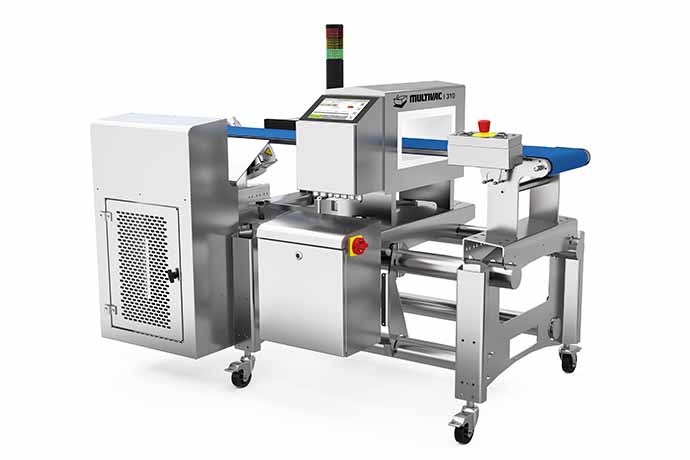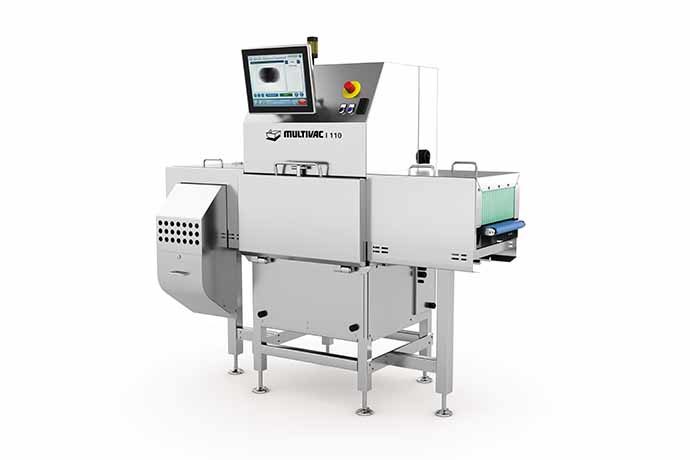From 2019 to June of 2023 the United States Dept. of Agriculture (USDA) reported 76 recalls of meat and poultry products due to foreign material contamination. Foreign material includes contamination by metal, glass, rock, stones, ceramics, bones, rubber, wood, bugs, and most importantly plastic.
Ideally, machines would detect even the most microscopic pieces of foreign material with no false positives. Unfortunately for food processors and consumers, this technology is not yet available. Processors today generally choose between metal detection and x-ray to detect foreign material. The conundrum for detection customers is still that no perfect machine exists.
“The customer is typically left with the choice of spending less money on a metal detection machine that can only detect ‘ferrous’ and ‘non-ferrous’ metals or an x-ray machine that can detect a much wider range of foreign contaminants at a noticeably higher cost and still not be able to detect foreign contaminants like bugs, plastics, and wood,” said David Quebbemann, director of sales and marketing, Americas, Anritsu Infivis Inc., Elk Grove Village, Ill.
Consumer preference for boneless products, especially chicken breasts and thigh fillets, continues to increase in popularity. Along with that popularity, comes a growing intolerance from both consumers and retailers for any remnants of bone in deboned meat.
“To protect their hard-won reputation, both processors and retailers want to be sure that the fillet products, which they are delivering to the consumer, are completely free of bones and other hard particles,” said Roy Driessen, marketing manager for poultry at Marel with offices in Des Moines, Iowa, and Lenexa, Kan.
In an ideal scenario, no foreign material in need of detection would exist, but Ryan Spencer, product market manager at Kansas City, Mo.-based Multivac USA, said it’s imperative to appreciate the peace of mind that quality detection brings.
“It’s easy to look at inspection as just a ‘box to check’ or an unnecessary expense, but when you consider the headache that dealing with a potential product recall because of a single customer complaint from a small piece of metal that found its way into their package, it becomes easier to appreciate just how important having high quality inspection equipment is,” Spencer said.
Better detection
Over the years, the investment in x-ray foreign material detection has been justified due to continually improved ability to detect previously unseen contaminants. The cheaper labor to manually check for residual bones is a thing of the past. Large and small food manufacturers alike push x-ray machine suppliers to continually improve performance. Processors themselves also strive to continually improve their end product.
“This motivation toward continuous improvement drives leading x-ray companies to increase their capabilities and find smaller contaminants at higher speeds,” Quebbemann said.
The evolution of x-ray detection has also seen advances in sensors themselves and what the sensors see in the product passing through, as well how software within the machine interprets the information. Machines have become more durable, reliable and cost of ownership has decreased.
“Moreover, SensorX has evolved beyond being a standalone machine,” Driessen said. “Its integration into a breast fillet or thigh fillet line brings tremendous value to the processing line, as it also incorporates a product weigher. The data collected by SensorX can be utilized downstream to make informed decisions regarding the final product’s destination.”
Today’s x-ray systems offer an unmatched ease of use compared to the detection systems of the past. Intuitive automatic set up routines remove the need for specialized technical skills and the services of an electrician or engineer. Operators can now perform simple functions such as inputting product information and conveyor speeds before running product through enough times to set the detection signal.
“Newer systems and set-up menus can be operating within a couple minutes, and common user interfaces on equipment from a single supplier can reduce the need to train workers to use different technologies within a plant,” Quebbemann said.
Processors can now use single and 2D barcode reader systems to automatically switch between recipes on the detection equipment. This automation element gives processors the option to accommodate different food products on the same production line. Security and traceability also have improved with the use of RFID tags and fingerprint readers being integrated into machines that validate machine set-up. The industry as a whole has not only embraced the improvements over the years but has now mandated it in some instances.
“Most fast-food producers and supermarket chains now insist on detection equipment being installed in those plants, which supply them with bone-free products,” Driessen said. “This is a sign of the confidence that the industry now has in automatic detection equipment.”
Costco is one such retailer that now requires x-ray detection equipment in the processing lines of its suppliers.
“We are seeing a big shift in the landscape with Costco requiring x-ray detection for a wide swath of food products,” Spencer said. “This has really pushed many more customers to find x-ray solutions who otherwise may have stayed the course with metal detectors. A lot of our efforts this year have been to help customers understand the new requirements and navigate some of the regulatory issues with adding x-ray units into their operation.”
Beyond the advances in technology and automation, x-ray detection can provide other tangible, margin enhancing attributes to a range of food processing products in addition to foreign material detection.
“X-ray can also detect and reject product quality issues such as broken products and piece count inaccuracies,” Spencer added. “This makes it much more useful in ensuring only the highest quality product is being shipped to customers.”
 Source: Multivac
Source: Multivac
Tools of tomorrow
The future of foreign material detection has already begun with new technologies being developed in real time today.
As the demands for foreign material-free products grow and labor becomes more expensive and less available, the future of detection will continue to become more intricate and precise. Hyperspectral imaging is a technology that will soon be introduced to the meat processing industry.
Driessen said, “By analyzing the chemical structure of the fillet’s surface, hyperspectral technology can detect differences in this surface, indicating the presence of foreign material.”
Another similar technology Quebbemann noted involves creating light spectrum and x-ray “signatures” of common foreign material contaminants. Machines will store these signatures and have the ability to reject products that contain the foreign material through associating it with the stored signature compared to the actual light spectrum of x-ray wavelength detected during production.
“These enhanced capabilities will allow food manufacturers to better detect some of the very hard to detect plastics and wood that currently remain undetected,” Quebbemann said. “As such, the future of foreign material detection looks very promising for not only meat processors, but for the entire food industry.”
Multivac’s Spencer added, “I think we will see a continued increase of interest and demand in more capable systems for foreign metal detection. The real cost and the damage to the brand that recalls can cause is getting too high, and doing more to prevent those problems in the first place is a sound investment.”



